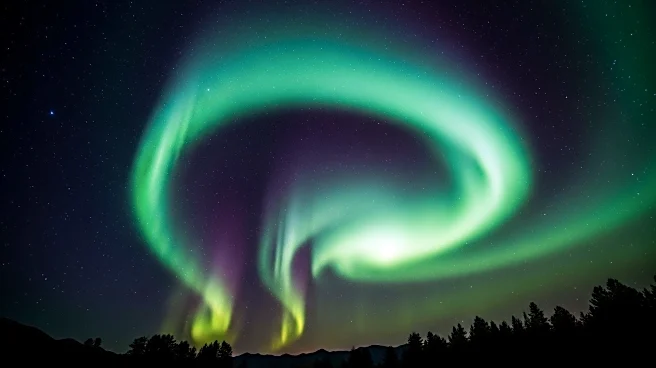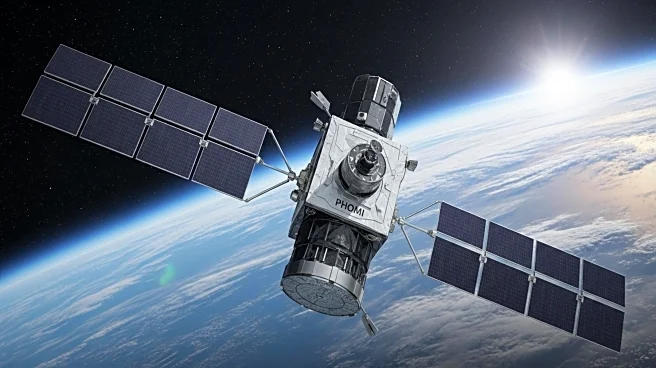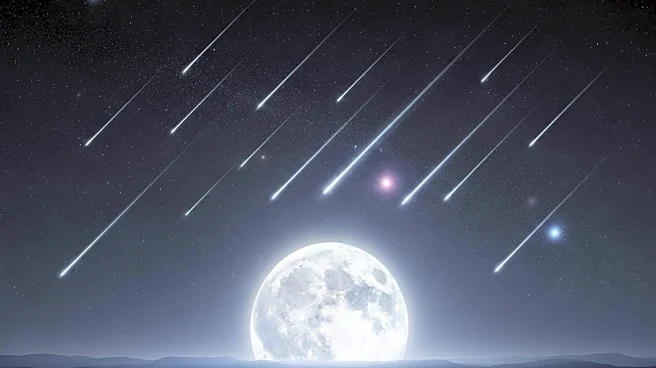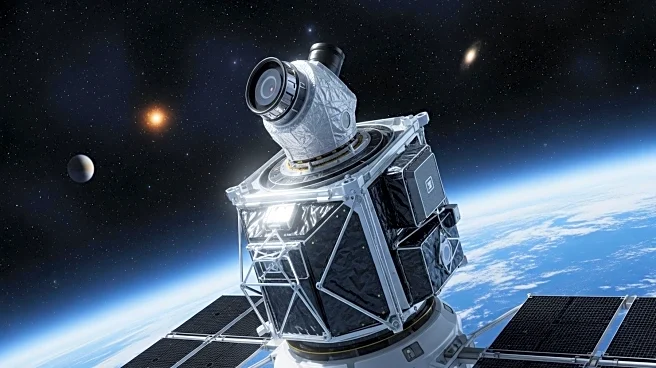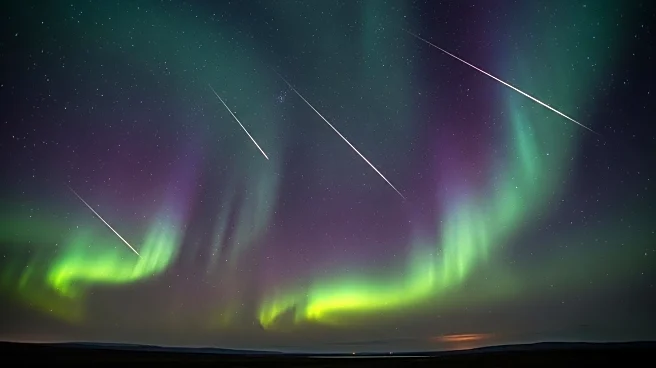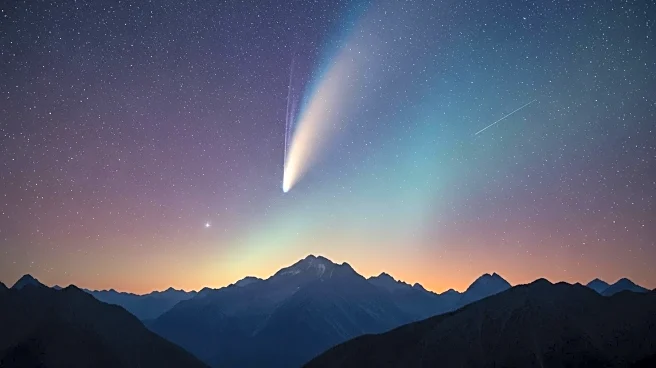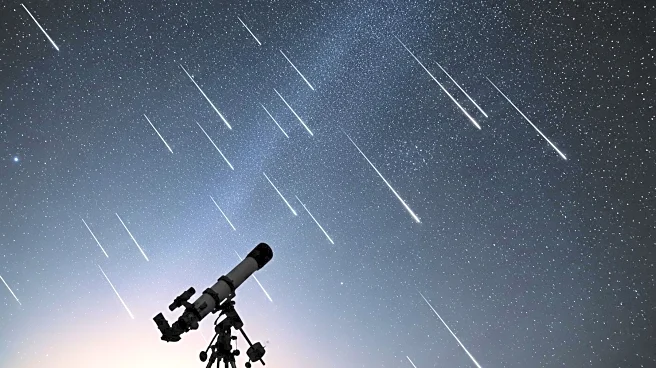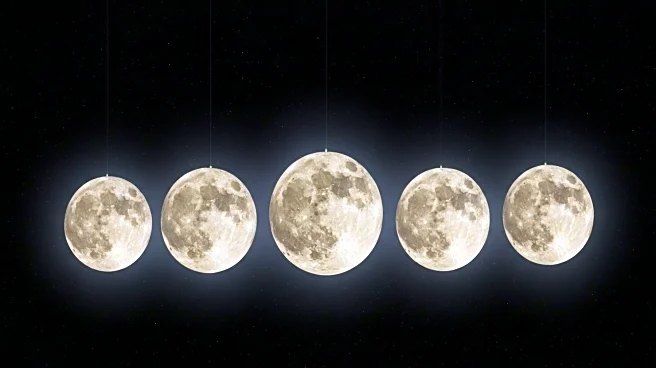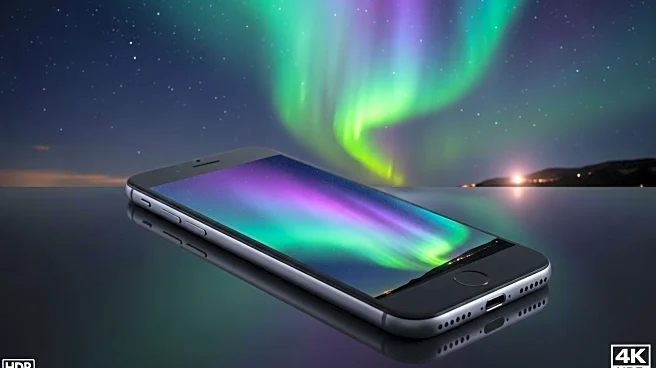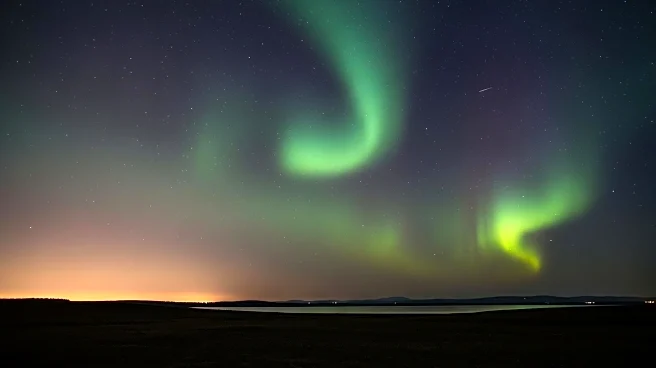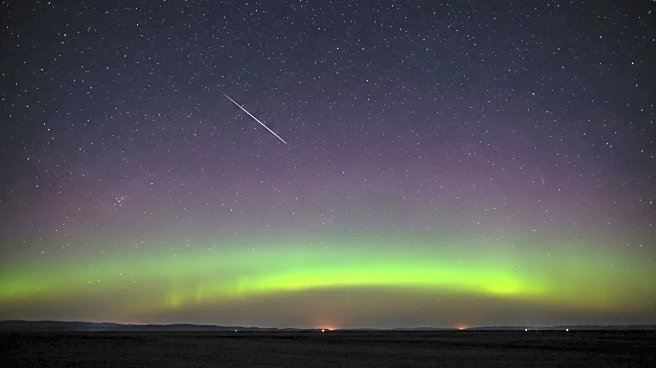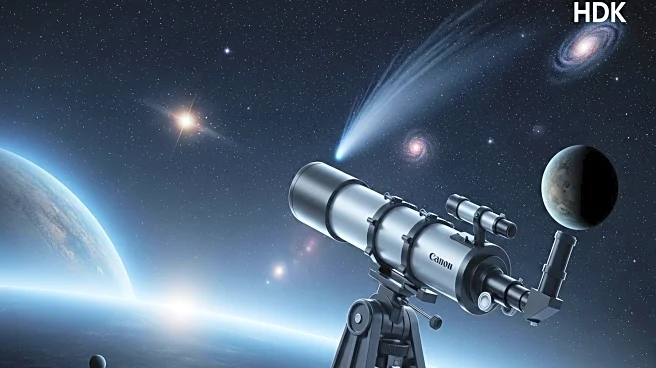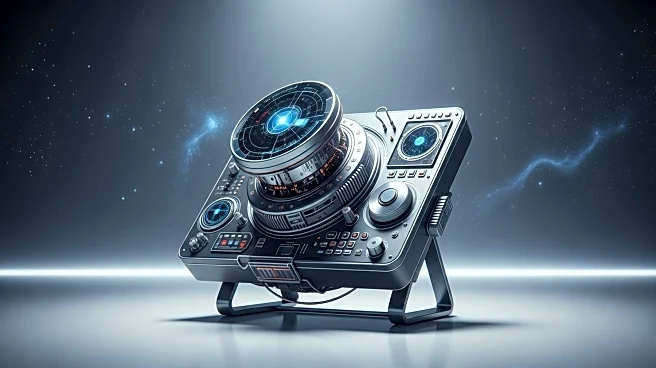What is the story about?
What's Happening?
The National Oceanic and Atmospheric Administration (NOAA) has forecasted a strong geomagnetic storm, classified as G3, expected to occur on September 30, 2025. This storm is a result of a coronal mass ejection (CME) following a recent M6.4-class solar flare. The Space Weather Prediction Center (SWPC) anticipates that the storm could lead to spectacular aurora displays, particularly in high-latitude regions. Additionally, the period will feature visible comets and meteor showers, including the Southern Taurids and Daytime Sextantids, offering skywatchers a unique opportunity to observe celestial phenomena.
Why It's Important?
The predicted geomagnetic storm and associated celestial events present significant opportunities for both scientific observation and public engagement with space phenomena. The potential for visible auroras could attract tourists to northern regions, boosting local economies. Moreover, the storm's impact on satellite operations and communication systems highlights the importance of space weather monitoring and preparedness. For amateur astronomers and enthusiasts, the period offers a rare chance to witness multiple astronomical events, fostering interest in space science and education.
What's Next?
Observers are advised to monitor local weather conditions for optimal viewing opportunities and to check real-time updates from NOAA and other space weather services. The potential for auroras at mid-latitudes means that even those outside typical viewing areas might catch a glimpse of the northern lights. As the storm progresses, further updates will be crucial for those interested in observing or photographing these phenomena.
AI Generated Content
Do you find this article useful?
